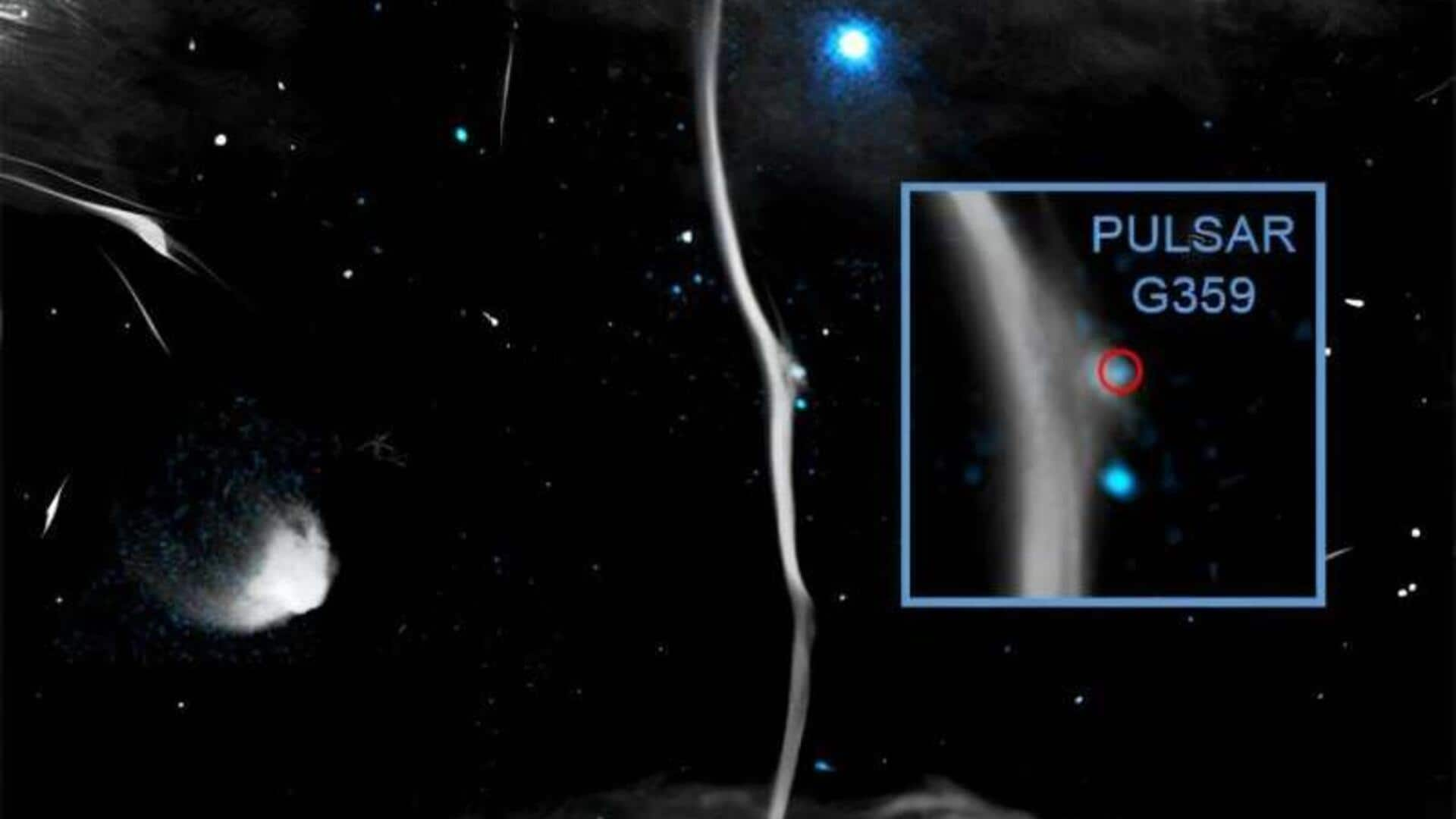
We finally know why there's a 'fracture' in Milky Way
What's the story
Using NASA's Chandra X-ray Observatory and radio telescopes, astronomers have studied a fracture in a huge cosmic structure, or "bone," in our Milky Way galaxy.
The study indicates that the break was caused by a rapidly spinning neutron star, also known as pulsar.
Formed from the collapse and explosion of massive stars, these neutron stars are extremely dense.
Structures
Cosmic 'bones' in the Milky Way
The Milky Way galaxy hosts giant bone- or snake-like structures near its center.
These long formations, called cosmic "bones," are seen in radio waves and are threaded by magnetic fields that run parallel to them.
Energized particles spiraling along these magnetic fields generate the radio waves that define these structures.
One such structure is G359.13142-0.20005 (G359.13), dubbed the Snake by researchers for its serpentine shape.
Discovery
X-ray and radio data reveal fracture in G359.13
The latest image of G359.13, combines Chandra's X-ray data (blue) and South Africa's MeerKAT radio array (gray).
The composite picture shows a break, or fracture, in the otherwise continuous length of G359.13.
The combined X-ray and radio data gave clues to the cause of this fracture, prompting astronomers to identify an X-ray and radio source at its location using Chandra, MeerKAT, and the National Science Foundation's Very Large Array (VLA) data.
Impact
Pulsar collision likely caused fracture
The likely source of the X-ray and radio signals is a pulsar, which may have caused the fracture by colliding with G359.13 at speeds between one million and two million miles per hour.
This collision is believed to have distorted the magnetic field in the cosmic bone, causing a corresponding distortion in its radio signal.
The research detailing these findings has been published in the journal Monthly Notices of the Royal Astronomical Society.